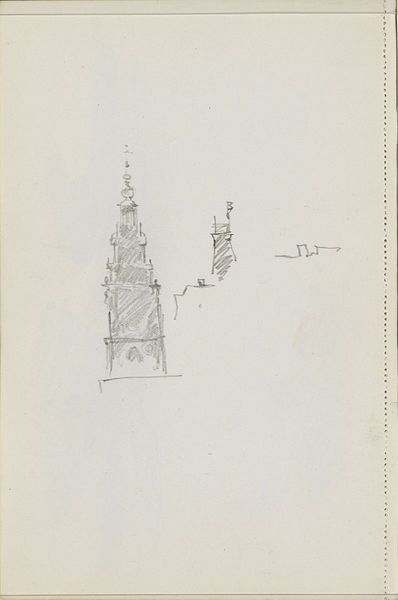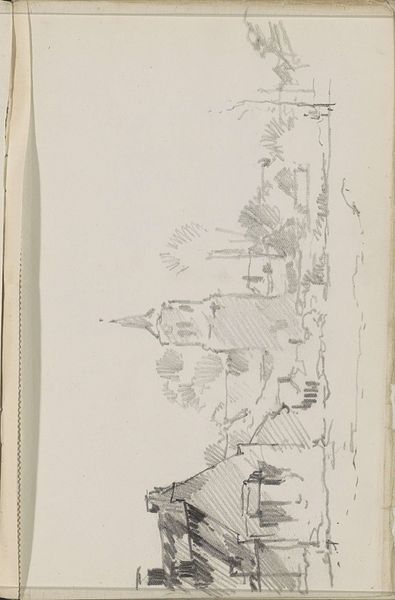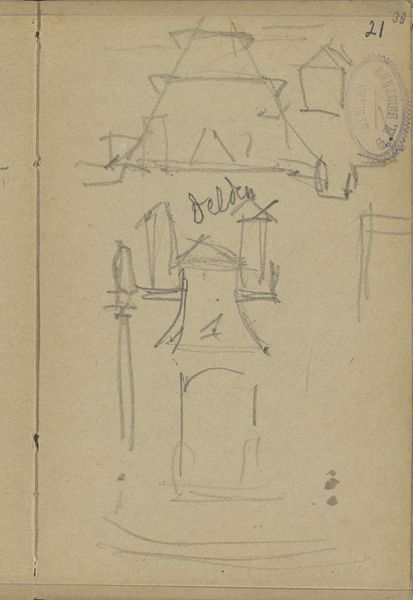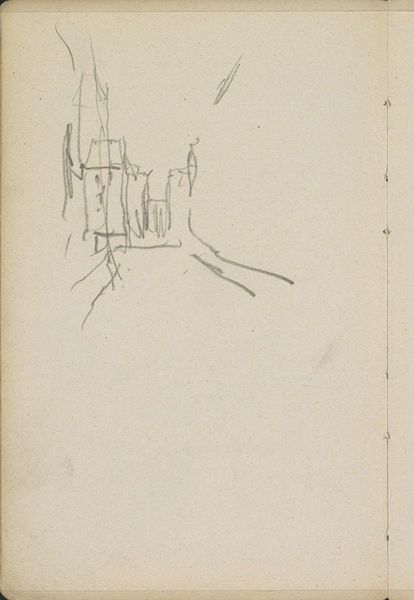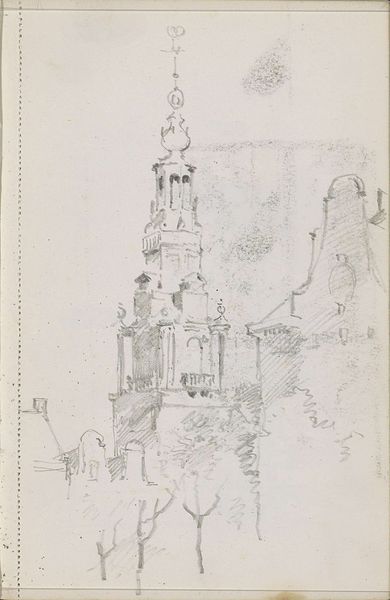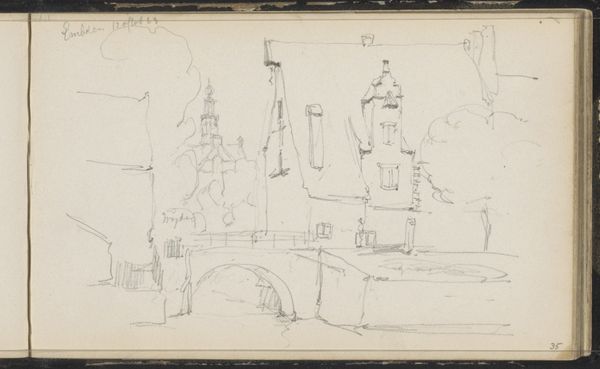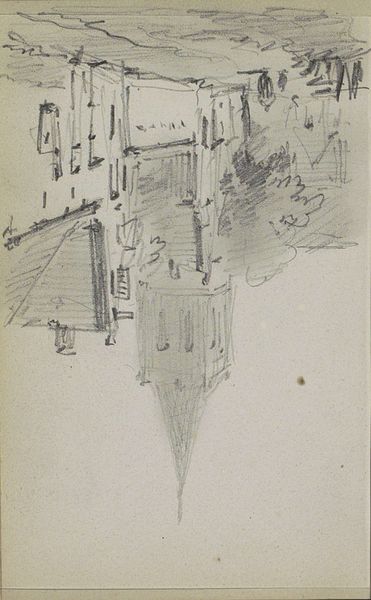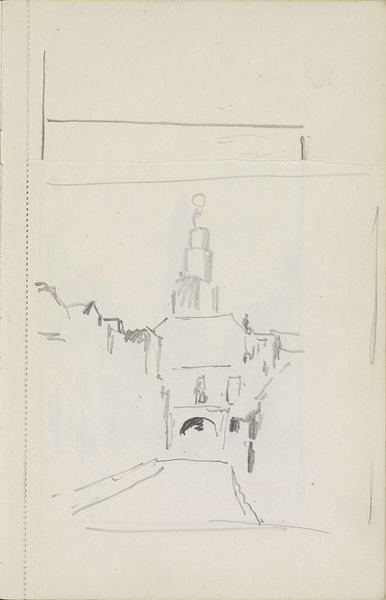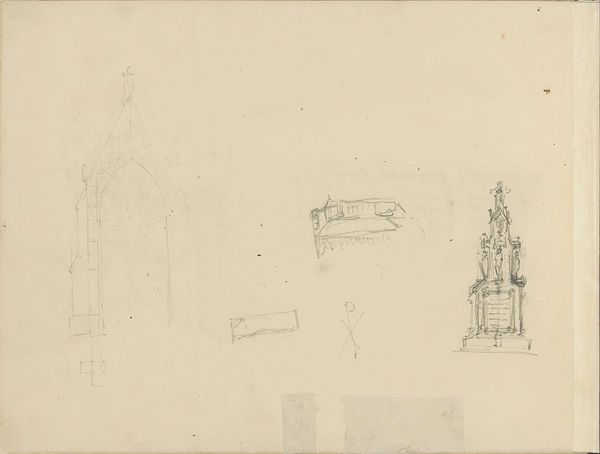
drawing, pencil, graphite
#
drawing
#
aged paper
#
quirky sketch
#
sketch book
#
landscape
#
personal sketchbook
#
idea generation sketch
#
sketchwork
#
ink drawing experimentation
#
pencil
#
graphite
#
sketchbook drawing
#
cityscape
#
storyboard and sketchbook work
#
sketchbook art
Copyright: Rijks Museum: Open Domain
Editor: So, here we have Cornelis Vreedenburgh's "Stoomlocomotief," a graphite and pencil drawing done sometime between 1890 and 1946. It feels like a quick sketch from a personal sketchbook, almost like a fleeting impression. What jumps out at you? Curator: The immediate appeal lies in its directness and economy of line. Notice how Vreedenburgh uses hatching to build up tone and volume, particularly in the depiction of the locomotive's cylindrical forms and the contrasting verticality of what appears to be a church spire. Do you observe any tension between these elements? Editor: I do. The sketch feels like a study in contrasts – the soft, almost hazy depiction of the architecture against the harder, more mechanical rendering of the locomotive. Does this contrast offer any insight? Curator: Precisely. The rough handling of the pencil emphasizes the materiality of the medium, drawing attention to the artist's process. We can almost sense the speed and decisiveness of his hand. Consider also the composition: the positioning of these objects and how they may relate. Does that suggest a theme for this drawing? Editor: Maybe a commentary on the industrial revolution juxtaposed with traditional cityscapes? A visual shorthand for progress, perhaps? The artist probably chose the medium to evoke nostalgia. Curator: The value of such artworks exists intrinsically, in its lines and composition, even above cultural or historical meaning, which can be fluid or transient. It might seem so different through the lens of Formalist principles. Editor: I appreciate that; that emphasis on the art object itself helps me to see beyond just the apparent themes of progress, and more how line, medium, and the drawing come together. Curator: Indeed. Every line and mark contributes to a network of meanings which reveals both the artwork and ourselves.
Comments
No comments
Be the first to comment and join the conversation on the ultimate creative platform.
